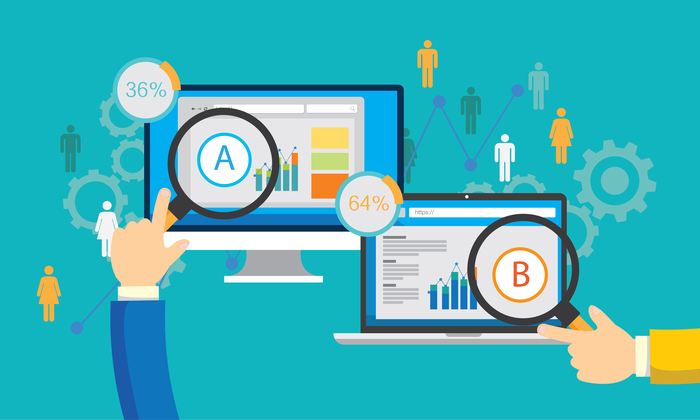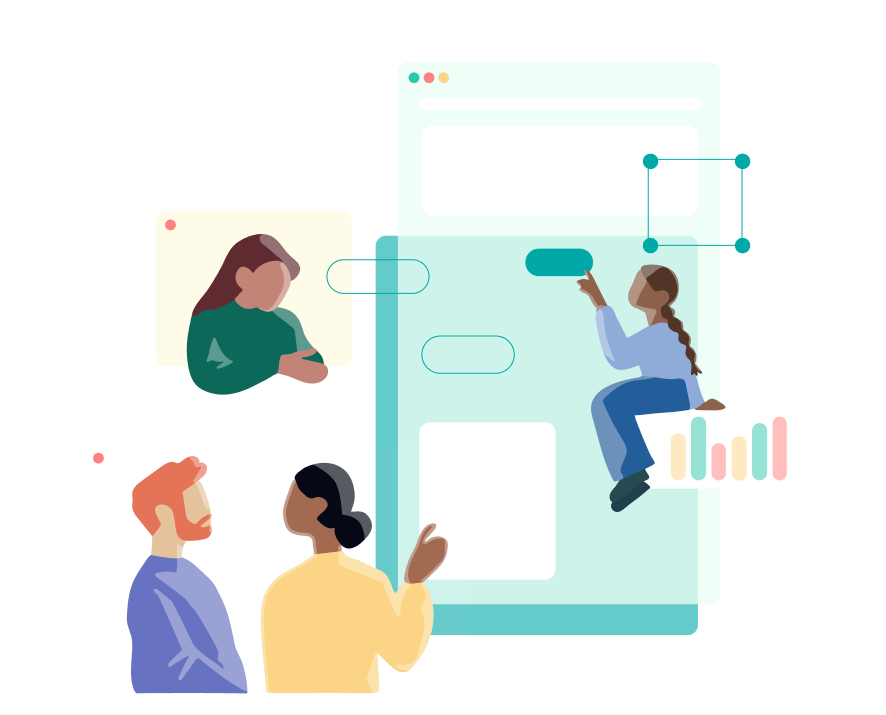Introducing Moderated & Unmoderated Remote Usability Testing
In today’s digital world, where attention span is short, and the customer journey is just as complex, achieving providing a top-notch user experience can be a challenge. To make this happen, you need to listen directly to your users, get their feedback, and turn these into actionable insights on creating a user experience design that truly rocks. Here are our two usability testing approaches that can help:
Moderated Remote Usability Testing
With Loop11’s remote moderated user testing approach, user test participants can perform the test from their chosen location (like a home office) while a moderator instructs and observes them remotely. This is highly recommended not just for convenience but if there’s doubt that unmoderated testing may yield ambiguous results.
Unmoderated Remote Usability Testing
Loop11’s remote unmoderated user testing allows participants to take the test from anywhere and any device without the need for a moderator or controlled environment. While the results may not be as comprehensive as a moderated test, it is a cost-effective option that provides valuable insights into real-world usage and may even uncover critical findings or hypotheses that require testing with a larger sample size.

Ready to Create the Best User Experience Possible?
Start by conducting usability testing to get valuable feedback from your users. With fresh eyes and unbiased feedback, you can create a user experience that truly rocks. Sign up for a free trial today and take the first step towards designing an exceptional user experience.
The Benefits of Online Usability Testing
User testing can be your greatest ally in creating excellent digital products, and there are more reasons why you should plan for one right now:

Improve User Satisfaction and Retention
By using online usability testing, you can identify and address usability issues that may be causing frustration for your users. This can lead to increased user satisfaction, higher retention rates, and ultimately, greater business success.

Get Honest and Accurate Feedback
Online usability testing allows you to get direct feedback from your users on their experience using your product. This feedback is honest and accurate, giving you valuable insights into what is working and what needs improvement.

Save time and money
Online usability testing can be done quickly and easily with the right tools, saving you time and money compared to traditional in-person testing. This allows you to conduct more tests and iterate faster, improving your product more efficiently.

Compare different versions of your product
With online usability testing, you can compare different versions of your product and see which performs better. This allows you to make data-driven decisions and optimize your product for maximum performance.

Identify issues early
Online usability testing can help you identify real issues before you spend more money building a product with a bad design. This can save you time and money in the long run by avoiding costly redesigns and rework.

Create a more satisfying user experience
By using online usability testing to identify and fix usability issues, you can create a more satisfying user experience for your customers. This can lead to increased customer loyalty and advocacy, helping you build a stronger brand and grow your business.

Our Clients Say It Best

“Loop11 saves us lot of time because we can reach more people than we could if we were doing in-person interviews.”


“Loop11 has been a wonderful asset for us. We can see real world kids and real world parents in real world environments, and how the (FUNetix) app performs. And we can make adjustments based off of that.”


“You should be able to prepare a user test very quickly. With Loop11, we can do that. Whereas traditionally, there was a lot of prep time for user tests, and you’d recruit users and invite them in. Loop11 is a very quick way to validate a design.”

Design and Content Chapter Lead, Vodafone Ireland
Discover More Features of Our Online User Testing Platform
Explore our features that allow you to easily manage your testing projects and obtain valuable feedback from your users.
AI Insights
Unmoderated Usability Testing
Prototype Testing
Moderated Usability Testing
Information Architecture (IA) Testing
A/B Testing
UX Benchmarking
True Intent Studies
Mobile & Tablet UX Testing
User Session Recording & Replay
Search Engine Findability
Clickstream Analytics
Heatmap Analysis
AI Browser Agents
Unlock the Power of Online Usability Testing for Your Business
Online usability testing is a process of evaluating a user’s experience when interacting with a digital product, such as a website or mobile app. Its main goal is to spot potential design, usability, and user experience issues that might negatively affect the product’s performance and get valuable insights into how users interact with your product and make an informed decision on building a digital product that they will love, enjoy, and find easy to use.
- 78% of companies incorporate online usability testing in their user experience strategy
- When continuously testing, a group of five users is typically sufficient to identify 85% of usability problems
- Set Your Goals
Before running usability testing, it’s crucial to define clear goals to help you determine the proper testing methods, how many testers are needed, and how to analyse research findings. Having a well-defined plan is crucial to the success of your usability test. Without a clear direction, you risk running a test that’s cluttered and produces inaccurate insights that may lead to poor product decisions. - Check Your Resources
Effective usability testing requires a great deal of planning and, if not done right, may quickly turn into a logistical nightmare that can block your product development process. To ensure that you’re on the right path, you must ask yourself these questions:- When will the project start and end?
- How many team members are needed to carry out the testing?
- How will you recruit test participants?
- Do you need to conduct the research online or offline – or both?
- What tools will you require?
- How long will each step of the process take?
- Choose Your Test Wisely
Depending on the insights you want to uncover, different types of usability tests will produce varying results. Consider these factors in choosing which one will work for you best:- Quantitative or Qualitative: Quantitative data provides objective, numerical data from usability tests, while qualitative research aims to understand the motivations, thoughts, and behavior of your users. Combining both methods has proven to be the most effective.
- Moderated or Unmoderated: Researchers can be present (moderated) or absent (unmoderated) during the test. Sometimes, having a moderator present may create cognitive biases.
- Pick Your Sample Size
Once you’re transparent with what you’re hoping to achieve and how you plan to do it, you can determine the sample size for your usability testing. Keep in mind that ‘bigger is better’ may not always work best. For example, you may attempt to analyse results from 100 interviews and find it daunting to come up with valuable insights. But it’s only sometimes the case, especially with quantitative research, where a larger sample size can mean a wider pool of statistics to review. By carefully checking your goals and the test you want to run, you can plot the optimal sample size to get actionable insights from your data. - Ask the Right Questions
Once you’ve determined what you want to discover and how to go about it, you can now quickly screen users to target for your testing by asking them these initial set of questions:- How old are you?
- What’s your highest level of education?
- Do you consider yourself tech-savvy?
- Have you used a similar product, app, or website before?
- Which device do you often use for doing tasks?
- Did you experience any issues in completing any of the tasks?
- Which task was the most challenging?
- What did you think of features A, B, and C?
- Are there any features on a competitor’s product that are missing here?
- Why didn’t you like feature X?
- Measure What Matters
A cliche, but conducting usability tests is half of the challenge; the other half is extracting valuable insights that can help you answer your research questions and achieve your goals. So, before you start your usability studies, specify the data you want to gather. Here are some qualitative and quantitative metrics to consider:- Time-on-Task: Assess how long a participant took to complete a usability task
- Likes, Dislikes, Recommendations: Learn how participants felt and what they thought of the usability of your design through qualitative feedback
- Critical Errors: Learn what errors were encountered that stopped the participant from completing a task
- Non-Critical Errors: Spot minor issues that may have deviated the participant into taking the wrong action, like missing a step or navigating to the wrong page
- Error-free Rate: Know the percentage of participants who completed their tasks without errors and label it as your ‘North Star’ metric
- Successful Task Completion: Know the percentage of tasks successfully completed by participants, regardless of how they achieve it
- Analyse and Take Action
At this point, you have already collected several data points from your usability testing. Great! Now, it’s time to sort out which issues you need to address and prioritise them accordingly so you can come up with a timely solution for each.To make your findings more actionable, the NNGroup suggests that you can rank your discoveries into five different levels of severity to allow you to focus on the most critical problems first:- Level 4 – Critical: Issues that fall under these prevent users from completing their tasks and negatively impact their experience. For example, a user can’t sign up for an account.
- Level 3 – Serious: Issues here require urgent attention as they slow down the user experience. For example, a user can’t reset the password.
- Level 2 – Medium: Issues here are moderately severe and may cause frustration to the user, though they may not happen frequently. For example, infinite scrolling.
- Level 1 – Low: These cosmetic issues may not significantly impact the user experience but may affect the brand image. For example, outdated fonts or typos.
- Level 0 – No Issue: A user may report an issue that isn’t really a problem or request a feature that’s not yet available. You may take note of these, but no action is necessary now.
- Think about the person using your product. Watch them use it and see how you can make their experience better.
- Test your product early and often so you can find problems that you can fix quickly.
- Ask users for feedback to give you good ideas about how to make your product better.
- Use the right tools to help you keep track of what tasks you want them to do If you follow these tips, you’ll do just fine!
With all these amazing benefits come hurdles one can face when doing an online usability test. The biggest challenge to date is not the limitations of time and money to run these tests but audience accuracy. How can one be sure that you have the correct user group who will take part in the test and that they have used your products before?
Avoiding dubious test participants is still a hit or miss. Some take a massive number of tests in exchange for cash, devaluing the input and polluting data in the process. But the worst offender of them all is a competitor stealing your idea when you’re doing remote, unmoderated tests, as you can’t stop testers from taking screenshots or sharing what they saw.
To avoid this problem, you must pay attention and ensure your test is set up correctly. Even if you carefully pick your user demographics, you may still end up with results that only apply to your product or users. This means wasting resources on the information you don’t need.
Luckily, you’ve come to the right place! Let us help you dodge these hurdles to truly make online usability testing work for you in creating that great user experience.
Latest UX resources
View all resources
How to increase website findability using A/B testing strategies
A/B testing is like putting out two dishes at a dinner party; whichever is consumed the most is likely the tastiest. The same goes for web pages—the more popular version is likely the one most viewers will find the most attractive. This guide will explore A/B testing strategies for improving website findability. What is A/B […]

User-Centric Automation: Enhancing UX and CX in the Age of IoT
Many companies have already recognized the importance of a seamless user experience (UX) and customer experience (CX) in order to forge close relationships with their customers. Perhaps surprisingly, the Internet of Things (IoT) can be used to help companies achieve both of these goals. Let’s look at some of the roles that the IoT can […]

Moderated Testing: Definition, Process, and Best Practices
Adopting a customer-centric mindset is crucial for website success. Understanding your customers, gathering relevant feedback, and developing products that meet their needs are essential steps in this process. Moderated testing plays a key role in achieving these goals by helping product teams understand how end users interact with a product and how well it aligns […]
Boost Your Website Performance with Online Usability Testing
Sign up for a free trial today to see how Loop11 can help improve your site or app’s user experience. By using online usability testing, you can increase user satisfaction and retention, get honest and accurate feedback, save time and money, compare different versions of your product, identify issues early, and create a more satisfying user experience for your customers.













